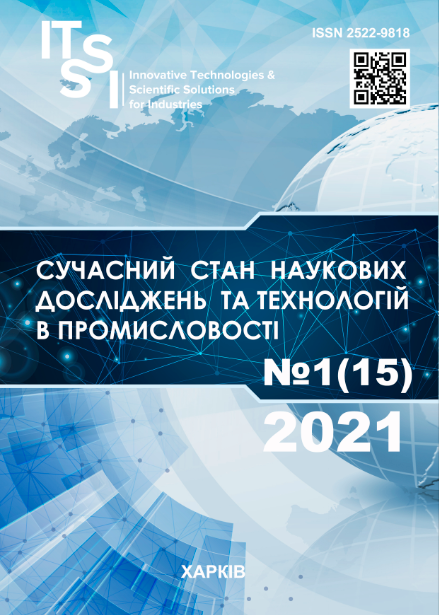RESEARCH OF ACID TRANSACTION IMPLEMENTATION METHODS FOR DISTRIBUTED DATABASES USING REPLICATION TECHNOLOGY
DOI:
https://doi.org/10.30837/ITSSI.2021.16.019Keywords:
distributed database, transaction, performance, ACID, NOSQL, NewSQL, MongoDB, VoltDBAbstract
Today, databases are an integral part of most modern applications designed to store large amounts of data and to request from many users. To solve business problems in such conditions, databases are scaled, often horizontally on several physical servers using replication technology. At the same time, many business operations require the implementation of transactional compliance with ACID properties. For relational databases that traditionally support ACID transactions, horizontal scaling is not always effective due to the limitations of the relational model itself. Therefore, there is an applied problem of efficient implementation of ACID transactions for horizontally distributed databases. The subject matter of the study is the methods of implementing ACID transactions in distributed databases, created by replication technology. The goal of the work is to increase the efficiency of ACID transaction implementation for horizontally distributed databases. The work is devoted to solving the following tasks: analysis and selection of the most relevant methods of implementation of distributed ACID transactions; planning and experimental research of methods for implementing ACID transactions by using of NoSQL DBMS MongoDB and NewSQL DBMS VoltDB as an example; measurements of metrics of productivity of use of these methods and formation of the recommendation concerning their effective use. The following methods are used: system analysis; relational databases design; methods for evaluating database performance. The following results were obtained: experimental measurements of the execution time of typical distributed transactions for the subject area of e-commerce, as well as measurements of the number of resources required for their execution; revealed trends in the performance of such transactions, formed recommendations for the methods studied. The obtained results allowed to make functions of dependence of the considered metrics on loading parameters. Conclusions: the strengths and weaknesses of the implementation of distributed ACID transactions using MongoDB and VoltDB were identified. Practical recommendations for the effective use of these systems for different types of applications, taking into account the resources consumed and the types of requests.
References
Tamer Özsu, M. (2020), Principles of Distributed Database Systems, Springer International Publishing, 674 p.
Maran, M. M., Paniavin, N. A., Poliushkin, I. A. (2020), "Alternative Approaches to Data Storing and Processing", V International Conference on Information Technologies in Engineering Education (Inforino). DOI: https://doi.org/10.1109/inforino48376.2020.9111708
Blokdyk, G. (2018), ACID Transactions Second Edition, 5STARCooks, 282 p.
Kemme, B., Peris, R. J., Patiño-Martínez, M. (2010), Database Replication (Synthesis Lectures on Data Management), Morgan and Claypool Publishers, 154 p. DOI: https://doi.org/10.2200/S00296ED1V01Y201008DTM007
Moniruzzaman, А. B. M., Hossain, S. A. (2012), "NoSQL Database: New Era of Databases for Big data Analytics – Classification, Characteristics and Comparison", International Journal of Database Theory and Application, No. 4, P. 1.
Kuzochkina, A., Shirokopetleva, M., Dudar, Z. (2018), "Analyzing and Comparison of NoSQL DBMS", International Scientific-Practical Conference Problems of Infocommunications. Science and Technology (PIC S&T), P. 560–564. DOI: https://doi.org/10.1109/INFOCOMMST.2018.8632133
Sahatqija, K., Ajdari, J., Zenuni, X., Raufi, B., Ismaili, F., (2018), "Comparison between relational and NOSQL databases", 41st International Convention on Information and Communication Technology, Electronics and Microelectronics (MIPRO), P. 216–221. DOI: https://doi.org/10.23919/mipro.2018.8400041
Győrödi, C. A., Dumşe-Burescu, D. V., Zmaranda, D. R., Győrödi, R. Ş., Gabor, G. A., Pecherle, G. D. (2020), "Performance Analysis of NoSQL and Relational Databases with CouchDB and MySQL for Application’s Data Storage", Applied Sciences, No. 10 (23), P. 8524. DOI: https://doi.org/10.3390/app10238524
Sadalage, P., Fowler, M. (2012), NoSQL Distilled: A Brief Guide to the Emerging World of Polyglot Persistence, 1st Edition, Addison-Wesley Professional, 192 p.
Chodorow, K. (2016), MongoDB: The Definitive Guide: Powerful and Scalable Data Storage, 3rd Edition, O'Reilly Media, 514 p.
Palanisamy, S., Suvitha Vani P. (2020), "A survey on RDBMS and NoSQL Databases MySQL vs MongoDB", International Conference on Computer Communication and Informatics (ICCCI). DOI: https://doi.org/10.1109/iccci48352.2020.9104047
Pavlo, A., Aslett, M. (2016), "What’s Really New with NewSQL?", SIGMOD Record, Vol. 45(2), P. 45–55. DOI: https://doi.org/10.1145/3003665.3003674
Astrova, I., Koschel, A., Wellermann, N., Klostermeyer, P. (2021), "Performance Benchmarking of NewSQL Databases with Yahoo Cloud Serving Benchmark", Proceedings of the Future Technologies Conference (FTC) 2020, Vol. 2. FTC 2020. Advances in Intelligent Systems and Computing, Vol. 1289, Springer, Cham. DOI: https://doi.org/10.1007/978-3-030-63089-8_17
Bhiri, S., Gaaloul, K., Perrin, O., Godart, C., (2005), "Overview of Transactional Patterns: Combining Workflow Flexibility and Transactional Reliability for Composite Web Services", In: van der Aalst W.M.P., Benatallah B., Casati F., Curbera F. (eds) Business Process Management. BPM 2005, Lecture Notes in Computer Science, Vol. 3649, Springer, Berlin, Heidelberg. DOI: https://doi.org/10.1007/11538394_37
Priya, M., Kalpana, R. (2017), "Distributed and Parallel Processing of Location based spatial query with Approximate Transformation", Ninth International Conference on Advanced Computing (ICoAC), P. 334–338. DOI: https://doi.org/10.1109/ICoAC.2017.8441297
Gomes, C., Borba, E., Tavares, E., Meuse Nogueira de O. Junior (2019), "Performability Model for Assessing NoSQL DBMS Consistency", IEEE International Systems Conference (SysCon). DOI: https://doi.org/10.1109/syscon.2019.8836757
Downloads
Published
How to Cite
Issue
Section
License

This work is licensed under a Creative Commons Attribution-NonCommercial-ShareAlike 4.0 International License.
Our journal abides by the Creative Commons copyright rights and permissions for open access journals.
Authors who publish with this journal agree to the following terms:
Authors hold the copyright without restrictions and grant the journal right of first publication with the work simultaneously licensed under a Creative Commons Attribution-NonCommercial-ShareAlike 4.0 International License (CC BY-NC-SA 4.0) that allows others to share the work with an acknowledgment of the work's authorship and initial publication in this journal.
Authors are able to enter into separate, additional contractual arrangements for the non-commercial and non-exclusive distribution of the journal's published version of the work (e.g., post it to an institutional repository or publish it in a book), with an acknowledgment of its initial publication in this journal.
Authors are permitted and encouraged to post their published work online (e.g., in institutional repositories or on their website) as it can lead to productive exchanges, as well as earlier and greater citation of published work.














